Last updated on October 28th, 2022 at 07:58 am
Every now and then I want to add more and more greenery into some spaces at home which feel so plain. And you like me who left only so much space, plants with shallow roots system and growing in short pots are the perfect solution for you.

You can grow plants in pots or containers of any size, so you can fit them into any space. And plants with shallow roots are perfect for container gardening! These plants don’t need a lot of soil to grow, so they’re perfect for small pots. There are even flowering plants with shallow roots which can add more color to any space.
In this article, we will discuss what plants have short roots and why they’re ideal for container gardening. We’ll also list some popular plants that fit this description and tell you where you can grow them indoors or outdoors. So if you’re interested in starting a container garden, read on to learn more!
Table of Contents
What are plants with shallow roots?
Plants with shallow roots don’t need a lot of soil to grow. They have short root systems that allow them to get the water and nutrients they need from a small amount of soil. This makes them ideal for growing in pots or containers because they don’t need a lot of space to spread their roots.
Why are plants with shallow roots suitable for container gardening?
There are several reasons why plants with shallow roots are suitable for container gardening. First, as we mentioned before, these plants don’t need a lot of soil to grow. This means you can use small pots or containers to grow them.
And since they don’t need a lot of space to spread their roots, you can fit more plants into a smaller space. Additionally, plants with shallow roots are often drought-tolerant. This means they don’t need a lot of water to thrive, so they’re perfect for dry climates or areas with limited water.
Which plants have shallow roots?
There are many plants that have shallow roots, but here are a few of the most popular:
Impatiens
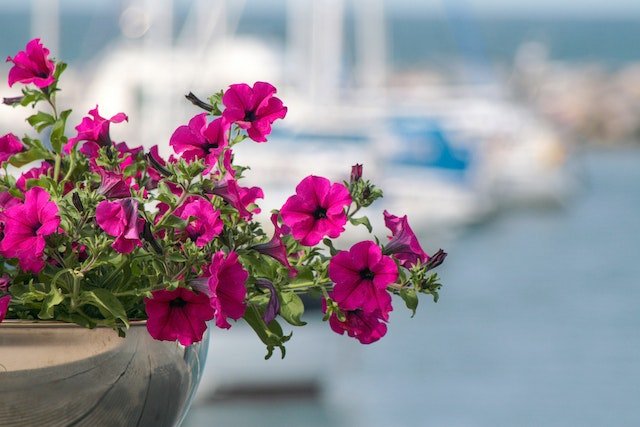
Impatiens are a popular choice for both gardeners and landscapers due to their vibrant flowers and easy care requirements. One of the most common questions about impatiens is how long their roots can grow. The answer depends on the variety of impatiens, but most have roots that can reach up to 2 feet in length. Impatiens also have a fibrous root system, which makes them well-suited for growing in containers.
When it comes to planting impatiens, gardeners in cooler climates will have the best luck growing them in pots that can be brought indoors during the winter months. In general, impatiens prefer moist, well-drained soil and partial shade, making them ideal for planting under trees or in shady areas of the garden. With proper care, impatiens will thrive in USDA hardiness zones 10-12.
Petunias
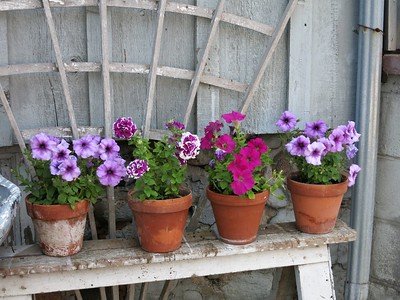
Petunias are a popular choice for both gardens and containers because of their colorful petals and ease of care. But how long do petunia roots grow, and what kind of roots does this plant have? The answer may surprise you.
Petunia roots can grow up to 10 feet long, but they are typically only 2-3 feet long. The roots are mostly fibrous, with a few larger lateral roots. This plant does best in a container or garden in zones 9-11, although it can also do well in zone 8 with some protection from the cold. The main thing to remember with petunias is that they need well-draining soil. Planting them in too much shade will result in fewer leaves, so if you’re looking for a plant with short roots with vibrant colors, be sure to give them plenty of sun.
Marigolds

Marigolds are versatile and popular plants with shallow root systems, known for their ability to brighten up any garden. They come in a variety of colors, including yellow, orange, and red, and they are relatively easy to care for. One question that is often asked about marigolds is how deep their roots grow. The answer depends on the type of marigold.
Some varieties, such as French marigolds, have small roots that only grow a few inches below the surface of the soil. Others, like signet marigolds, have deeper roots that can reach up to two feet in depth. Regardless of the type of marigold, they all have fibrous root systems that help anchor the plant in place and absorb nutrients from the soil. When it comes to planting marigolds, they can be placed either in a garden bed or in a container.
If you live in an area with harsh winters, it is best to plant them in a container so you can easily move them indoors when the temperature starts to drop. Marigolds are also fairly tolerant of different growing conditions, but they prefer full sun and well-drained soil. In terms of gardening zones, marigolds can be grown in zones 2-11.
Zinnias
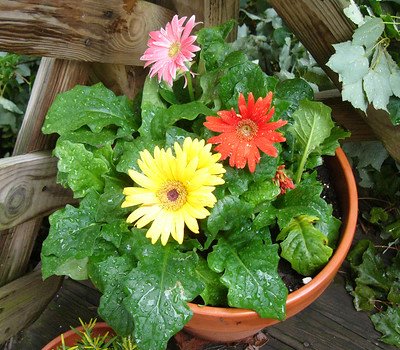
Zinnias are a type of shallow-rooted flowering plant that belongs to the Asteraceae family. They are native to Mexico and South America, but they can now be found all over the world. Zinnias are known for their bright, cheerful petals, which comes in a wide range of colors. They are a popular choice for both gardens and containers, and they are relatively easy to care for. Zinnias typically have a taproot system, which means that their roots grow down into the soil.
The main root can grow quite long, and it is typically surrounded by smaller lateral roots. In general, zinnias prefer well-drained soil and full sun, although some varieties can tolerate partial shade. They will also grow in a wide range of soil types, from sandy to clay. Most zinnias will thrive in USDA hardiness zones 2-11. However, it is always best to check the specific variety that you are planning to grow. With proper care, zinnias will bloom from early summer until the first frost of the season.
Cosmos
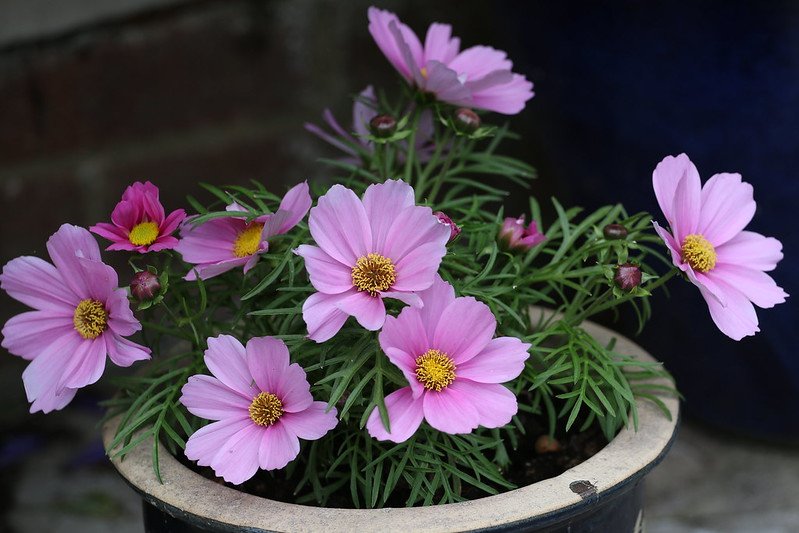
Cosmos are a type of short root plant that can grow up to six feet tall. They have shallow, fibrous roots that spread wide, making them well-suited for growing in containers or gardens. Cosmos can thrive in a variety of gardening zones, but they do best in warm, sunny locations. When planting cosmos, it is important to keep the root system moist until the plants are established. Once they are established, the cosmos are relatively drought-tolerant. With proper care, the cosmos will bloom from spring through fall.
Sunflowers
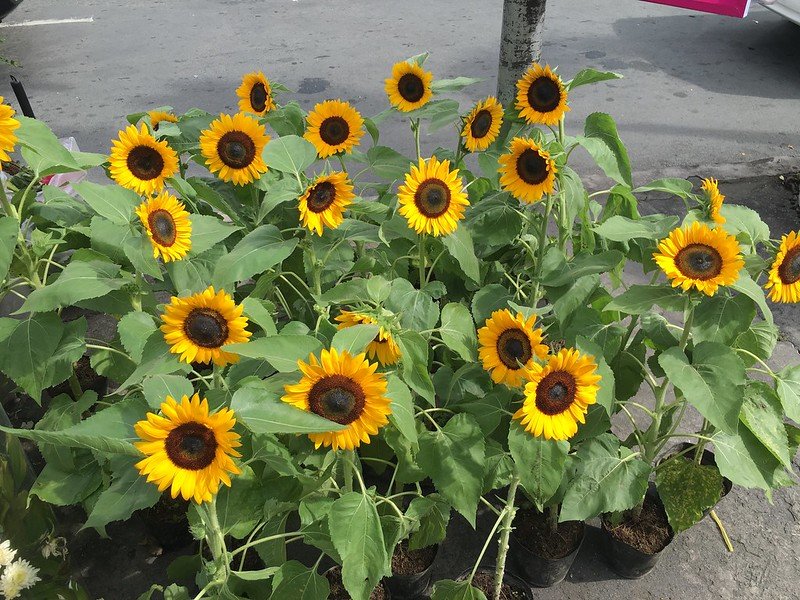
Sunflowers are annual plants that grow to a height of 6 to 12 feet, with a single large flower head that can be up to 12 inches in diameter. The roots of sunflowers are relatively short, growing to a depth of only 2 to 3 feet. However, the taproot can extend much further down into the soil, providing anchorage and support for the plant.
Sunflowers are not particular about soil type, but they do need good drainage. They can be grown in containers or in the garden, but if you want to keep the root system short, it’s best to plant them in a container. Sunflowers are hardy in USDA gardening zones 4-9.
Black-eyed Susans
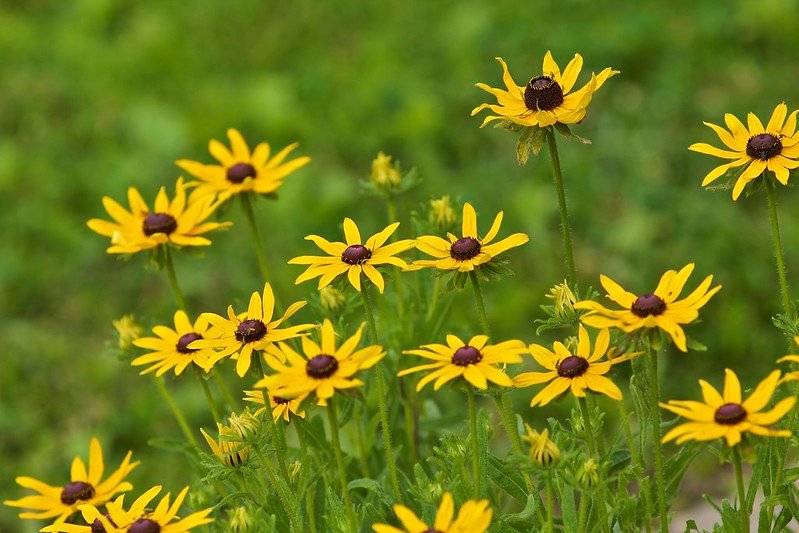
Black-eyed Susans (Rudbeckia hirta) are easy-to-grow annuals that add a splash of color to any garden. They are hardy plants that can tolerate a wide range of growing conditions, but they do best in full sun and well-drained soil. Black-eyed Susans have fibrous roots that spread out close to the surface of the soil.
This makes them ideal for planting in containers or raised beds where their roots will not compete with other plants for space. To keep the roots short, it is best to plant black-eyed Susans in areas with minimal foot traffic. They will also thrive in any gardening zone as long as they are given enough sunlight and water.
These plants are all annual, which means they only last one growing season. This makes them ideal for container gardening because you can change up your plants each year to get a new look.
If you are looking for perennial with short-rooted, here are our top picks:
Coneflowers

Coneflowers are hardy perennials that can thrive in a wide range of conditions. Their roots are deep and fibrous, making them very drought-tolerant. However, they can also tolerate moist soils, making them ideal for a variety of garden locations. One of the best ways to keep coneflowers’ roots short is to plant them in a container. This will help to prevent the roots from spreading too rapidly and becoming invasive.
Coneflowers are also relatively disease-resistant, making them a low-maintenance option for gardeners. They typically bloom from early summer to fall, and their flowers come in various colors including pink, purple, and white. Coneflowers can thrive in USDA hardiness zones 3-9, making them a versatile option for gardens across the country.
Daylilies


Daylilies are hardy perennials that are relatively easy to grow. They are adaptable to a wide range of soil types and can tolerate some drought. Daylilies have thick, fleshy roots that store moisture and nutrients. They also have small root hairs that help the plant absorb water and nutrients from the soil. Daylilies can be planted in either a garden or a container.
If you live in an area with cold winters, it is best to plant them in a container so you can move them indoors. Daylilies do not like to be waterlogged, so it is important to make sure the soil drains well. You can control the size of daylilies by removing the flower stalks after they bloom. You can also divide the plants every few years to keep them from getting too big. Daylilies are hardy in zones 3-9.
Hostas
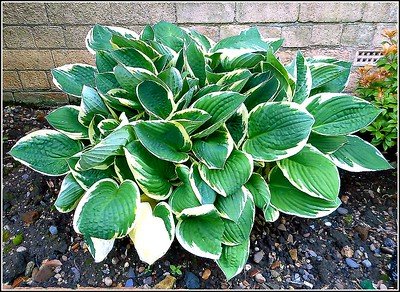
Hostas are a type of perennial that is grown for their large, lush leaves. The plant produces rhizomes, which are thick, fleshy roots that grow horizontally just below the soil surface. Propagating hostas from these rhizomes is an easy way to produce new plants.
In fact, if left unchecked, hostas can easily take over a garden bed due to their aggressive root system. For this reason, many gardeners prefer to pot their hostas in containers. This not only prevents the plant from spreading but also makes it easier to control the amount of water and fertilizer the plant receives.
Hostas are hardy plants that can thrive in a wide range of temperatures and light conditions. However, they do prefer shady areas and well-drained soil. To keep the roots short, gardeners can periodically lift the plant and trim the roots back. Hostas are versatile plants that can be used in a variety of landscapes. With proper care, they will provide years of enjoyment.
Sedum
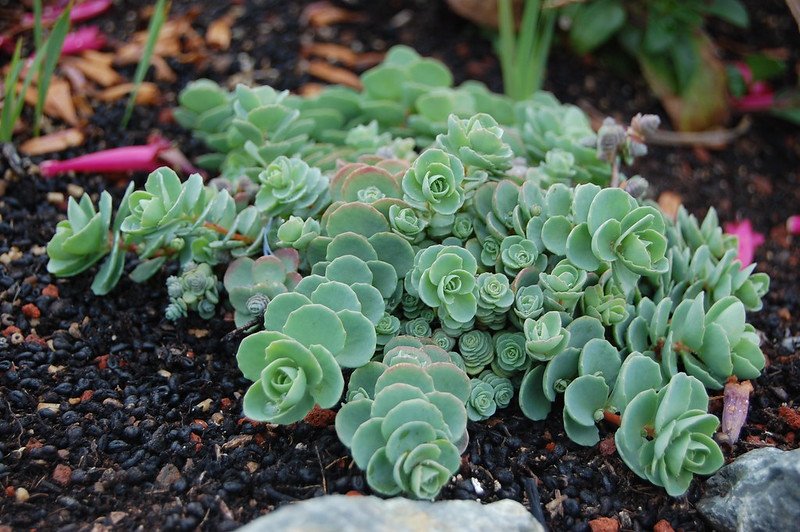
Sedum is a hardy succulent that can thrive in a variety of conditions. Its roots are relatively shallow and fibrous, making it well-suited for growing in containers or gardens with poor drainage. Although sedum can tolerate prolonged periods of drought, its roots will benefit from occasional watering. For best results, plant sedum in well-drained soil in a sunny location.
Gardeners in colder climates should choose a variety that is winter-hardy in their region. To keep the roots short, the sedum should be pruned back periodically. With proper care, sedum will thrive in zones 3-9.
Lavender
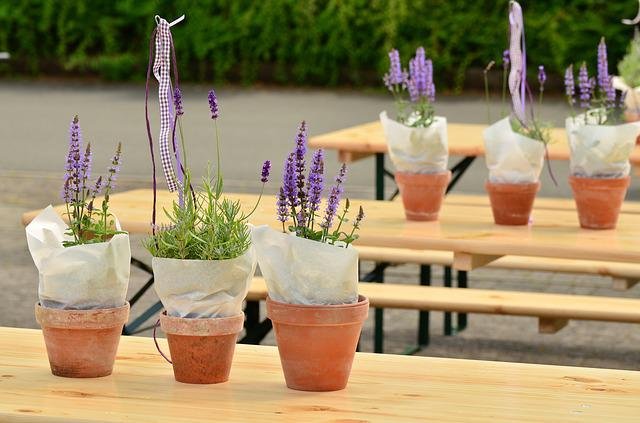
Lavender (Lavandula) is a perennial evergreen shrub that is best known for its fragrant petals and oil. The roots of lavender plants are relatively shallow, so they do not need a deep pot or garden bed. In fact, planting lavender in a container can help to control its spread. To keep the roots short, regular pruning is necessary.
Lavender will thrive in any gardening zone as long as it has well-drained soil and full sun. For best results, water the plants deeply and allow them to dry out between watering. Fertilize with a balanced fertilizer in spring and summer. Cut back the plants by half in late summer to promote fresh growth.
Mint

Mint is a fast-growing herb that can quickly become invasive if not kept in check. The roots of mint are shallow and spreading, so it is best to plant them in a container or raise it in a bed. Mint prefers a moist, shady location and will do well in most soil types. To keep the roots short, this herb should be cut back regularly. In frost-free areas, mint can be grown year-round. It is hardy in zones 4-10.
Rosemary
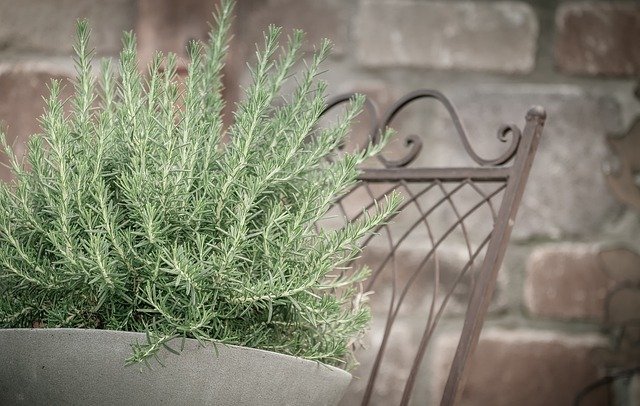
Rosemary (Rosmarinus officinalis) is a fragrant, evergreen herb that is native to the Mediterranean region. It is a member of the mint family and has both culinary and medicinal uses. Rosemary can be grown as a perennial in USDA hardiness zones 8-10, but it is often grown as an annual in colder climates. The plant prefers full sun and well-drained soil. It is drought-tolerant but benefits from occasional watering during extended periods of dry weather.
Rosemary roots are relatively shallow, so it is best to plant the herb in a container or raised bed to prevent the roots from becoming waterlogged. To keep the roots short, rosemary plants should be pruned regularly. When pruning, take care not to damage the woody stems as this can kill the plant.
Rosemary is a versatile herb that can be used in many different dishes. It pairs well with poultry, lamb, and fish. It can also be used to make tea, infused oils, and potpourri. Fresh rosemary sprigs can also be used as a garnish for salads and other dishes.
Perennials are plants that live for more than one growing season, so you only need to plant them once and they will come back year after year. Just be sure to choose a pot that is big enough for the roots to spread out.
Where can I grow plants with shallow roots?
You can grow plants with shallow roots indoors or outdoors. If you’re growing them indoors, make sure to choose a spot that gets plenty of light. And if you’re growing them outdoors, make sure to choose a spot that gets at least six hours of sunlight per day.
While deep-rooted plants are often associated with strength and stability, shallow-rooted plants have a number of advantages of their own. For one thing, shallow roots make it easier for plants to access water and nutrients from the top layer of soil, which is where the majority of these resources are found.
In addition, shallow roots help to anchor plants in place, making them less likely to be uprooted by strong winds or heavy rains. Finally, shallow roots make it easier for gardeners to care for their plants, as they can be more easily reached with a shovel or hoe. Whereas deep-rooted plants can be difficult to dig up without damaging the root system, shallow-rooted plants can be quickly and easily removed from the ground. Consequently, shallow-rooted plants offer a number of benefits that make them an ideal choice for many gardens.

Gardening is my passion and growing plants indoors has always been a stress relief for me. Grow a banana tree in my apartment once (although failed to produce bananas).





